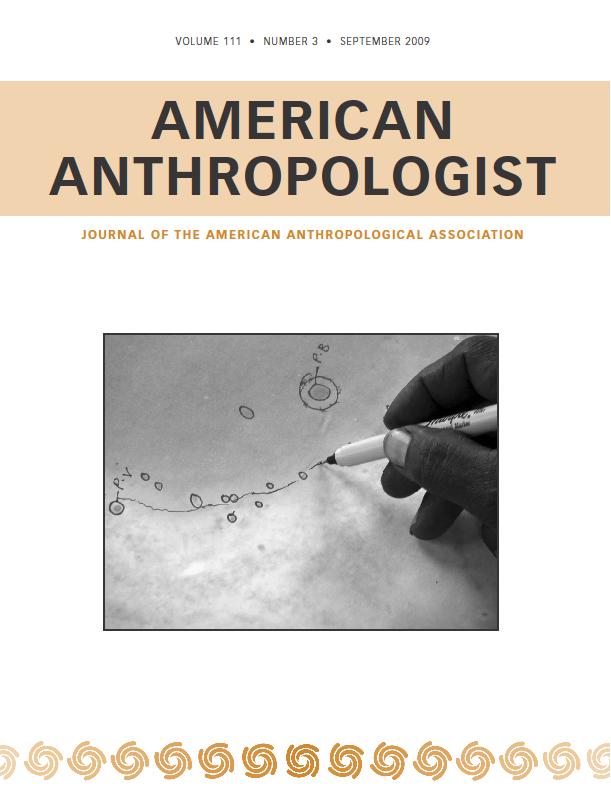Indro Montanelli (1909-2001), the most famous journalist in Italian history, is an intellectual figure whose memory commands respect across Italy’s political spectrum. But, following the global protests sparked by the killing of George Floyd in the United States, various associations (community-based, anti-racist, feminist, or student-run) as well as individual citizens demanded that Montanelli’s statue should be removed from its eponymous park in Milan and that the park should be renamed. The statue was defaced, splashed with red paint, and protestors scrawled epithets such as “racist” and “rapist” on its base.
In the 1930s, at age twenty-five, Montanelli travelled to Eritrea, where he joined the fascist army as a volunteer. There, he purchased a colonial bride who, in different accounts, he calls either Desta or Fatima, and was either twelve or fourteen years old at the time. Little is known about Desta or Fatima other than what Montanelli stated in later reminiscences. Montanelli’s Eritrean sojourn, about which he waxed nostalgically in numerous interviews, contributed to turn him away from his prior enthusiastic support of Mussolini’s plans to extend “civilization” into the dark interior of the African continent. By the war’s end, Montanelli was transformed into an avowed anti-fascist. Nevertheless, his sexual relations with this African girl, and his patent lack of remorse about it, could not fail to provoke public outrage at a moment when global calls to write counter-histories of imperial and racial violence are growing louder by the day.
In the 1930s, at age twenty-five, Montanelli travelled to Eritrea, where he joined the fascist army as a volunteer.
Some Italian journalists and historians have stepped in to defend the historical memory of Montanelli and to oppose the demolition of the monument. Specifically, his defenders have minimized the severity of Montanelli’s past actions, either by deploying a simplistic historical and cultural relativism or by dismissing criticisms of him as naïve attempts to “moralize” history.
Rather than focusing on the material fate of monuments (as others like Igiaba Scego have already productively done), we wish instead to highlight how Montanelli’s recollections of his colonial “adventures”, as well as the contemporary defense of his memory and character, reveal a critical failure of important segments of the Italian intellectual milieu to comprehend the nature and scale of racial violence.
One of Montanelli’s more detailed narrations of his relationship with possibly twelve-year-old Desta can be found in a 1969 interview on Italian television. The recent resurfacing of this visual document on social media has amplified existing controversies around Montanelli’s memory and Italy’s colonial past. What distinguishes this video from similar documents is the critical intervention – unusual for that period – of an Eritrean-Italian feminist, Elvira Banotti (1933-2014), who had been a member of the audience (see Dempsey 2018).
In the clip, Montanelli recounts how he married Desta, having bought her from her father according to local customs. Banotti interjects to point out the journalist’s inability to comprehend the violence intrinsic to this relationship. Montanelli reassures Banotti that no coercion was involved and clarifies that, in that socio-historical context, it was normal for girls of that age to marry. Banotti presses him, asking first if analogous conduct in Italy would not be considered rape and then, second, what biological and psychological distinctions exist between a twelve-year-old African girl and her European counterparts. Montanelli repeats that local girls married early, but Banotti doesn’t relent: “Yours was truly the violent relationship of the colonialist who arrived there and took possession of a twelve-year-old girl.” Montanelli either does not understand or, more likely, pretends not to understand what seems to us the most significant aspect of this line of critique: that violence should be considered constitutive of relationships firmly situated within colonial and racial hierarchies.
Violence should be considered constitutive of relationships firmly situated within colonial and racial hierarchies.
Montanelli’s legitimation of his sexual relations with a twelve-year-old girl, in this video and in other interviews and writings, is realized through specific discursive practices whose common denominator is the dehumanization of the colonial subject. Desta is reduced to a commodity: she is bought from her father and, when the young Montanelli returns to Italy, she is handed over to another soldier. In the journalist’s description, Desta’s feelings, needs, and voice are obliterated. Her personhood is represented in purely instrumental terms: she washes Montanelli’s clothes and provides indispensable sexual services. Moreover, in discussing their conjugal life, Montanelli doesn’t spare his audience indecent details: he alludes to the fact that the girl was infibulated; he mentions the virile effort he had to apply to overcome this obstacle; and he explains that it was ultimately thanks to the “brutal intervention of her mother” that he managed to have sexual intercourse with Desta. He tells us, though, that she never felt any pleasure because of the multiple surgeries performed on her body. Finally, Desta is placed in marked continuity with the sphere of nature: Montanelli describes her as a “docile little animal,” adding that it took him some time to become accustomed to her goat-like smell.
Far from being a prerogative of Montanelli or his generation, justifications for Italian male sexual proclivities in the colonies still abound in contemporary journalistic debates. Marco Travaglio, a well-known journalist, considered Montanelli’s heir and pupil, defended his mentor by adopting the same simplistic relativism that Montanelli had displayed earlier. According to Travaglio, Montanelli was a man of his time; he was no saint, but certainly he wasn’t a racist, much less a rapist.
Justifications for Italian male sexual proclivities in the colonies still abound in contemporary journalistic debates.
To corroborate his claim, Travaglio cites a recent interview with Angelo Del Boca, a well-regarded historian who documented the atrocities committed by the Italian army in the colonies, and whose popular writings have greatly contributed to demystifying the national myth of the Italiani brava gente (Italians, good people; Del Boca 2012). In this interview, Del Boca rejects the notion that Montanelli was a racist, suggesting that being in a relationship with such a young girl was not only “normal” at that time, but that inter-racial unions amounted to a form of “fraternization” between Italians and indigenous populations. For Del Boca, racist people would never marry African women; indeed, with the advent of Fascism, “true” racists would prohibit all relations between Italian men and local women to preserve the purity of the Italian race.
Interpreting Montanelli’s behaviors as part of a grand project of integration predicated on politics of intimacy, however, makes sense only within a strictly legalistic view of state and racial violence. For Del Boca, such violence manifests itself exclusively within the frame of military aggression against African sovereign states and the violation of international treaties, such as the Geneva Convention. Within this hermeneutic scheme, there is no space for the identification of the most intimate and pedestrian forms that racial violence takes in domestic spaces – spaces that are commonly, but erroneously, conceived of as extraneous to the logics of the state.
For Del Boca, there’s clearly a “before” – when interracial unions promoted integration – and an “after” – when their prohibition marked an unequivocal transition to institu-tionalized racism. However, a quick sketch of the history of interracial unions (known as madamato or concubinaggio) complicates this neat chronology and reveals historical continuities in racial ideologies and practices between the various phases of Italian colonialism (see Barrera 1996). Such a historical examination exposes crucial connections between the state, kinship, and racial ideologies – connections that are absent or marginal in the debate around Montanelli and in mainstream discussions of Italian racism.
In the first phases of Italian colonialism (1890-1922), liberal governments tolerated more or less formalized interracial unions, which entailed limited rights for local women and their progeny alike. Yet, the same governments demonstrated a less encouraging attitude towards civic marriage proper which would grant much greater rights to native wives and their children. Liberal policies around interracial unions took shape in a context in which Italian women – whose presence was especially limited in the first phases of colonialism – could not satisfy neither the sexual needs of the colonists nor their pressing demand for domestic labor (Stefani 2007). Moreover, at a more practical level, the state encouraged monogamous forms of concubinaggio in order to prevent epidemics of venereal diseases that presented a serious danger for Italian men. Instead of being instrumental to a grand project of enlightened métissage evoked by Del Boca’s use of “fraternization” earlier, the relational practices that we describe stemmed from markedly pragmatic needs in a context of violent racial subjugation (see Trento 2011).
The fascist government redefined the people of the Horn as bearers of an absolute and incommensurable alterity.
Although the racial ideologies of these years were less rigid than those devised during fascism, they nevertheless betrayed an affective racial grammar in which Black women of the Horn were seen as suitable for short, instrumentalist, sexual and domestic relationships, but unsuited to civic marriage and the privileges entailed. While some Italian scholars of the time, including anthropologists, theorized that the inhabitants of the Horn of Africa were closer to Mediterranean populations than the rest of sub-Saharan Africa, colonial subjects continued to be considered decidedly inferior to the colonizers (see Trento 2012). Hence, the institution of concubinaggio, differently from what Del Boca seems to imply, was based on a conception of African women as racial and sexual subordinates, unhappy surrogates for the ostensibly superior, yet unavailable, white Italian women (Barrera 1996).
With significant changes in racial ideologies ushered in by fascism, the policies regulating concubinaggio underwent dramatic restructuring. The fascist government – partly to justify its invasion of Ethiopia – redefined the people of the Horn as bearers of an absolute and incommensurable alterity. Consequentially, the racial laws of 1937 forbade sexual relations between different races (Barrera 2003). While it remained difficult to enforce this ban, the following year a new law was promulgated, prohibiting interracial marriages. In 1940, the racial laws were expanded to deprive mixed-race children of the possibility of acquiring Italian citizenship, stripping them of the partial and provisional rights that existed during the liberal period of Italian colonial rule (Sorgoni 2002).
At the structural level, racial laws and policies of all phases of colonialism institutionalized the subordination of colonized women.
Today, similar legal anxieties permeate the sclerotic debates about the acquisition of citizenship for the children of non-European nationals born on Italian soil (jus soli), even though the public discourse on contemporary Italian racism tends to ignore its genealogical continuities with racial ideologies of the colonial era (see Pesarini 2017).
There were, of course, interracial unions based on reciprocal affection. Nevertheless, at the structural level, racial laws and policies of all phases of colonialism institutionalized the subordination of colonized women – women who, depending on the historical period in question, could be bought and sold, handed over, and used, but who could rarely ask for justice and redress for abuses and sexual crimes which were systemic in scope. Montanelli’s reasoning is undergirded by the same forms of objectification institutionalized by the spirit of colonial law: to render colonized women subject to power, as things to be consumed.
In the interviews and texts we examined, we could not detect signs of remorse from Montanelli or any suggestion that his relationship with Desta was based on reciprocal affection. Yet, we conclude this essay by widening our considerations about colonial and racial violence beyond debates that center individual sentiments and attitudes in assessing intents as the main drivers for racism. This focus on the individual locates racism within the psyche, or in unconscious biases, rather than in institutionalized practices and relations that instantiate and maintain color-coded hierarchies. By focusing exclusively on the persona of Montanelli, most of the recent debates obscure the more significant fact that many Italians haven’t yet begun to come to terms with the racist legacy of their country, nor with the reflexes and sediments of the recent colonial past that continue to mark the present. Consider, for instance, the fate of children born in interracial relationships in the colonies (see Pesarini 2014). Many were abandoned in orphanages, with no access to rights under Italian law. Those who continued to live with their mothers were denied the legal recognition that Italian citizenship laws should confer on the basis of jus sanguinis. To fully benefit from the rights guaranteed by descent, the few children who were formally recognized by their fathers had, in many cases, to migrate, disavow their roots, and break ties with their African mothers.
Many Italians haven’t yet begun to come to terms with the racist legacy of their country, nor with the reflexes and sediments of the recent colonial past that continue to mark the present.
To equate ethics with legality, as some of Montanelli’s defenders do, reveals an incapacity to comprehend the multifarious shapes of racial violence in colonial contexts. An ethic that ignores the responsibility of Italian men and silences the voices of colonized women is a cover for an abuse of power that effectively prevents organic reflections on racism and anti-racism from becoming part of a common national consciousness.
Elvira Banotti, who gave voice to Desta in questioning Montanelli’s narrative, was herself the product of one of the interracial unions we’ve described. Banotti asks simple but crucial questions, obliging us to consider that, with the approval of law, state and society, Montanelli bought and had sex with a twelve-year-old girl – actions that, if performed on Italian soil, would have been sanctioned with great severity even by the moral code of that time. For Banotti, the fact that Montanelli could recount those actions publicly, with an air of impunity, and without any sense of remorse is explicable only by the fact of Desta’s blackness and her condition of colonial subjugation.
Bibliography
Barrera, Giulia. 1996. Dangerous Liasons: Colonial Concubinage in Eritrea (1890-1941). Working Paper Series, Evanston, Illinois. Northwestern University: Program of African Studies.
Barrera, Giulia. 2003. Mussolini’s Colonial Race Laws and State Settler Relations in AOI (1935-41). Journal of Modern Italian Studies. 8(3).
Del Boca, Angelo. 2012. Italiani Brava Gente? Un Mito Duro a Morire. Vicenza, Italy: Ne-riPozza Editore.
Dempsey, Mary Jane. 2018. Finding Postcolonial Figures: Rediscovering Elvira Banotti anther role in the Italian Feminist Movement. Women’s History Review, 27(7).
Pesarini, Angelica. 2014. Madri Nere, Figlie Bianche: Forme di Subalternità Femminile in Africa Orientale Italiana. In Subalternità Italiane: Percorsi di Ricerca tra Letteratura e Storia (eds) Deplano Valeria, Mari Lorenzo and Gabriele Proglio. Roma: Aracne.
Pesarini, Angelica. 2017. ‘Blood is Thicker than Water’: The Materialization of the Ra-cial Fascist Body in East Africa. Zapruder World: An International Journal for the History of Social Conflict, 4.
Sorgoni, Barbara. 2002. Racist Discourses and Practices in the Italian Empire During Fascism. In The Politics of Recognizing Difference. Multi-Culturalism Italian Style (eds) Grillo Ralph and Jeffrey Pratt . Aldershot: Ashgate.
Stefani, Giulietta. 2007. Colonia Per Maschi. Italiani in Africa orientale: Una Storia di Genere. Verona: Ombre Corte.
Trento, Giovanna. 2011. Madamato and Colonial Concubinage in Ethiopia: A Com-parative Perspective. Aethiopica: International Journal for Ethiopian and Eritrean Studies. 14.
Trento, Giovanna. 2012. From Marinetti to Pasolini: Massawa, the Read Sea, and the Construction of “Mediterranean Africa” in Italian Literature and Cinema. Northeast African Studies, 12(1).
Featured Image: Monument to Indro Montanelli, Milan. Photo (cropped and b&w) by Zibione, found on Wikimedia commons (CC BY-SA 4.0)






